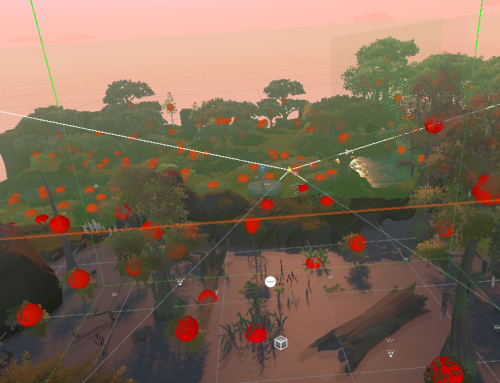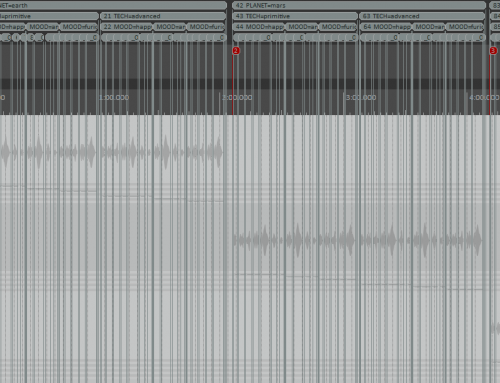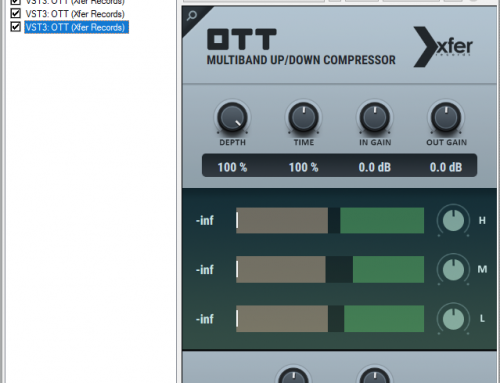Why You Need Good Audio and Especially Good Source Sounds?
For us as an audio co-dev studio, great source sounds are absolutely essential, but we see a lot of people underestimate just how much great-sounding source material matters. You can’t build a world-class soundscape if you’re constantly fighting with noisy recordings or poorly organized files. Over the years we’ve built a shortlist of go-to places we trust when we need professional libraries for our projects.
Let’s start simple. Great sound design doesn’t start in the mix or during the final polish. It begins much earlier, with the raw recordings themselves. Why?
It saves time: High-quality recordings are cleaner and better balanced from the outset. That means less time spent scrubbing out noise, fixing clipping, or layering multiple files to create something usable. Instead of “rescuing” audio, you can spend your hours crafting the creative aspects of your game’s soundscape, designing unique effects, building immersive ambiences, and fine-tuning player feedback.
Audio is the Emotional Layer of a Game: Sound and music carry the emotional weight of a player’s experience. Imagine Halo without its thunderous sci-fi gunfire, it would lose much of its gritty, futuristic atmosphere. Picture Red Dead Redemption 2 without Arthur Morgan’s rich, lived-in voice, his character would feel flat and distant. Or think of Forza Horizon with generic, lifeless engine noises, suddenly, it wouldn’t matter which car you’re driving.
Great source sounds are the foundation for these moments. They let designers shape audio that isn’t just heard but felt, audio that makes the world believable, the characters memorable, and the gameplay unforgettable.
The Difference Between Professional and Amateur Sound Libraries
Not all sound libraries are created equal. While amateur collections can be tempting, especially when they’re free or community-made, professional sound libraries bring a level of polish and reliability that pays off throughout the entire development process.
Precision in Naming and Metadata: A good library isn’t just about audio quality, it’s also about organization. Professional libraries tag and label every file clearly and consistently. Instead of digging through folders of files with cryptic names like “creature-02-fast.wav,” you can instantly locate the exact sound you need, keeping your workflow fast and frustration-free.
Licensing Made Easy: Professional providers build their products to be used in commercial projects. You won’t need to chase down individual creators for permission or worry about unexpected royalty fees. Just make sure to read the EULA or MULA (End-User/Master Use License Agreement) carefully, especially if you’re working in a larger studio, so you understand the scope of the license and any options for scaling.
Natural Variation for Immersion: Immersive games rely on subtle variation. Professional libraries often include multiple takes of the same effect, different footsteps, alternate gunshots, or varied creature sounds, so players don’t hear the same audio loop repeating over and over. These small differences keep the world alive and believable.
Fuel for Creativity: High-fidelity recordings do more than fill a need; they can spark new ideas. A single, richly textured ambience might inspire a new narrative setting. A unique impact sound could suggest a fresh gameplay mechanic. With professional-grade sounds, your library becomes a source of inspiration rather than just a toolbox.
Save Valuable Production Time: Professional libraries start with clean, well-recorded sounds, often captured in controlled studio environments. That means less time spent removing background noise or trying to fix unwanted artifacts, and more time focusing on what really matters: the creative side of sound design.
Style Consistency: Matching Audio to Visuals
When we work on a game, our audio director is in constant feedback loops with the game director, making sure the aesthetic vision truly comes to life. Great sound isn’t just about clarity or technical quality, it’s also about style and how well the audio supports the game’s visual language and overall mood.
For example, our internal production team puts a huge amount of effort into making sure our library releases are packed with carefully curated sounds across a wide range of aesthetics. That way, you can instantly find source material that matches your game’s art direction, whether you’re crafting a retro 8-bit platformer, a hand-drawn anime adventure, a hyper-realistic simulation, or an over-the-top action brawler.
Starting from libraries that offer these stylistic variations means less time bending a sound to fit and more time focusing on gameplay and storytelling.
What is a Sound Asset Manager?
We’ve tested many different audio asset managers, and finding the right one for your needs can be a challenge. That’s why we want to share our experiences with you guys!
A good sound asset manager:
Speeds up your Workflow
Keeps you organized
Let’s you focus on Design
With smart search tools, built-in metadata support, and features like batch renaming or quick previewing, it becomes the central hub of our audio pipeline. That’s also why we take metadata for our own library releases very seriously. We even go the extra mile by implementing advanced search structures, like tier tags, so you can find the right sounds in seconds and stay fully in the creative flow.
Popular Sound Asset Managers:
Soundly Pro: Equipped with a powerful smart search engine and a standout feature called “Find Similar,” Soundly Pro can identify sounds with a similar sonic character across your library. It also offers built-in processing modules such as EQ and pitch control, making it easy to tweak files on the fly. And it’s free.
Resonic Pro: Known for its rich metadata handling and fast waveform browsing, Resonic Pro offers robust search and processing tools. It also features tight integration with middleware and DAWs, making it a strong choice for professional game audio workflows.
Reaper’s Media Explorer: For those who work inside Reaper, the built-in Media Explorer is an excellent solution. It lets you audition and stream sounds directly into a Reaper project, eliminating the need to import files manually.
Soundminer: Is often considered the industry standard for larger studios, and for good reason. It comes with powerful metadata tools and offers instant audio preprocessing, making it ideal for managing massive, complex sound libraries. But there’s a trade-off. Soundminer is really built for professional users who already understand signal processing and advanced sound asset management.
How to find good Free Sound Effects?
High-quality audio doesn’t always require a big budget. There are excellent free libraries and community archives where you can source decent sounding effects, legally and safely. Here are some of our most trusted options:
1. Freesound.org
One of the largest community-driven sound libraries online. Contributors from around the world upload everything from field recordings to synthesized effects.
- License: Various Creative Commons options
- Why use it: Massive variety and an active community
2. Sonniss GDC Audio Bundles
Each year around GDC, Sonniss shares gigabytes of professional-grade sound effects from its commercial catalog.
- License: Royalty-free for both personal and commercial projects.
- Why use it: Good quality, often including ambiences and cinematic effects.
3. GCRadix Free Kits
At GCRadix, we weren’t satisfied with most of the free sound effects floating around the internet, so we decided to create our own. Our Free Kits are monthly releases of small, carefully curated sound effect packs, each one packed with rich metadata and designed to drop straight into your workflow.
- Use them anywhere: Every kit is cleared for both personal and commercial projects, whether you’re a solo indie developer or part of a large AAA studio.
- High-quality & well-organized: Each pack is meticulously recorded, edited, and tagged, so you can find exactly what you need without digging through clutter.
- Made to support the industry: These kits are our way of helping game creators, sound designers, and developers build more immersive experiences—without budget barriers.
We’re always happy when people give us a shout-out on social media or mention us in their credits, but that’s entirely optional. The kits are free to use, no strings attached, because we simply want to help you create awesome games and unforgettable soundscapes.
How to Find Professional Sound Libraries?
Now to the interesting part: Where to actually find the best sound libraries and effects.
As a co-development studio, we work with a variety of sources on our daily projects and have discovered some standout options, each with its own strengths and quirks.
ASoundEffect
A massive marketplace offering a huge variety of sound libraries from many different producers.
- Why it’s great: Perfect when you’re searching for something very specific, from rare ambiences to unusual foley.
- Things to know: Quality and metadata can vary between packs, so it pays to preview carefully.
- Pro tip: Many producers run their own online shops. Buying directly from them is often cheaper and ensures the creator receives more of the profit instead of marketplace commission.
Boom Library
One of the largest and most established sound-library production houses in the industry.
- Why it’s great: Their catalog covers a huge variety of topics, from wildlife and natural ambiences to cinematic impacts and complex sci-fi effects.
- Things to know: Some collections can feel a bit focused on quantity over perfection, but overall the production quality is consistently high, making them a reliable source for professional projects.
Soundly Pro
A complete library bundled inside its own sound-asset-manager hub, available through a monthly subscription.
- Why it’s great: Easy to use, with a wide range of general-purpose effects and a built-in search engine.
- Consider this: The catalog also contains plenty of raw, unprocessed recordings, so some files will still need additional sound design work to be game-ready.
Penguin Grenade
A niche but outstanding source for high-quality sci-fi and magic sound effects.
- Why it’s great: Ideal when you’re building futuristic worlds, spellcasting systems, or other otherworldly audio experiences.
GCRadix
At GCRadix, we create unique sound libraries for video games and indie studios shaped by real projects, inspired by community feedback, and crafted with passion. Find audio plugins, pipelines and sound libraries in our Shop.
- Why it’s great: Game-Audio First. Featuring smart naming structures, well-thought-out tagging, and truly unique content, GCRadix makes it easy to drop professional sounds straight into any project. Our flexible licensing scales smoothly, from solo indie developers to full AAA studios, so you can focus on creating without worrying about legal headaches.
- And don’t miss your monthly Free Kits, surprisingly high-quality and a perfect way to enhance your library at no cost.
Thanks for taking the time to read through this post, we hope it helps you discover better sounds! Libraries are a huge topic for us, and we’re always looking for smarter ways to work and ways to push quality even further.
Feel free to start a discussion in the comments, share your favorite libraries, tips, or questions. Our own libraries are driven by community feedback, so every suggestion helps us grow and improve.
Have a great week, and keep creating! (:



